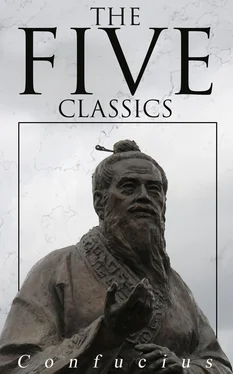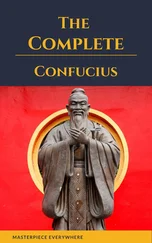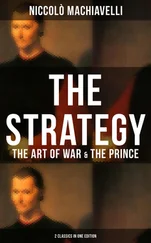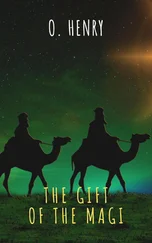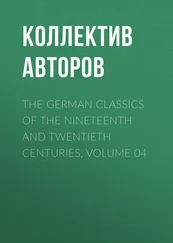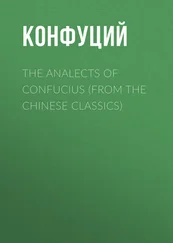'It will not be advantageous to cross the great stream:'--one (attempting to do so) would find himself in an abyss.
VII. 81. (The name) Sze describes the multitude (of the host). The 'firmness and correctness' (which the hexagram indicates) refer to (moral) correctness (of aim). When (the mover) is able to use the multitude with such correctness, he may attain to the royal sway.
2. There is (the symbol of) strength in the centre (of the trigram below), and it is responded to (by its proper correlate above). The action gives rise to perils, but is in accordance (with the best sentiments of men). (Its mover) may by such action distress all the country, but the people will follow him;--there will be good fortune, and what error should there be?
VIII. 91. 'Pî indicates that there is good fortune:'--(the name) Pî denotes help; (and we see in the figure) inferiors docilely following (their superior).
2. 'Let (the principal party intended in it) reexamine himself, (as if) by divination, whether his virtue be great, unintermitting, and firm;--if it be so, there will be no error:--all this follows from the position of the strong line in the centre (of the upper trigram). 'Those who have not rest will come to him:'--high and low will respond to its subject. 'With those who are (too) late in coming it will be ill:'--(for them) the way (of good fortune here indicated) has been exhausted.
IX. 101. In Hsiâo Kh û the weak line occupies its (proper) position, and (the lines) above and below respond to it. Hence comes the name of Hsiâo Kh û (Small Restraint).
2. (It presents the symbols of) strength and flexibility. Strong lines are in the central places, and the will (of their subjects) will have free course. Thus it indicates that there will be progress and success.
3. 'Dense clouds but no rain' indicate the movement (of the strong lines) still going forward. The 'Commencing at our western border' indicates that the (beneficial) influence has not yet been widely displayed.
X. 111. In Lî we have (the symbol of) weakness treading on (that of) strength.
2. (The lower trigram) indicates pleasure and satisfaction, and responds to (the upper) indicating strength. Hence (it is said), 'He treads on the tail of a tiger, which does not bite him; there will be progress and success.'
3. (The fifth line is) strong, in the centre, and in its correct place. (Its subject) occupies the God-(given) position, and falls into no distress or failure;--(his) action will be brilliant.
XI. 12'The little come and the great gone in Thâi, and its indication that there will be good fortune with progress and success' show to us heaven and earth in communication with each other, and all things in consequence having free course, and (also) the high and the low, (superiors and inferiors), in communication with one another, and possessed by the same aim. The inner (trigram) is made up of the strong and undivided lines, and the outer of the weak and divided; the inner is (the symbol of) strength, and the outer of docility; the inner (represents) the superior man, and the outer the small man. (Thus) the way of the superior man appears increasing, and that of the small man decreasing.
XII. 13'The want of good understanding between the (different classes of) men in Phî, and its indication as unfavourable to the firm and correct course of the superior man; with the intimation that the great are gone and the little come:'--all this springs from the fact that in it heaven and earth are not in communication with each other, and all things in consequence do not have free course; and that the high and the low (superiors and inferiors) are not in communication with one another, and there are no (well-regulated) states under the sky. The inner (trigram) is made up of the weak and divided lines, and the outer of the strong and undivided: the inner is (the symbol of) weakness, and the outer of strength; the inner (represents) the small man, and the outer the superior man. Thus the way of the small man appears increasing, and that of the superior man decreasing.
XIII. 141. In Thung Z ăn the weak (line) has the place (of influence), the central place, and responds to (the corresponding line in) Kh ien (above); hence comes its name of Thung Z ăn (or 'Union of men').
2. Thung Z ăn says:--
3. The language, 'Thung Z ăn appears here (as we find it) in (the remote districts of) the country, indicating progress and success, and that it will be advantageous to cross the great stream,' is moulded by its containing the strength (symbolled) in Kh ien. (Then) we have (the trigram indicating) elegance and intelligence, supported by (that indicating) strength; with the line in the central, and its correct, position, and responding (to the corresponding line above):--(all representing) the correct course of the superior man. It is only the superior man who can comprehend and affect the minds of all under the sky.
XIV. 151. In Tâ Yû the weak (line) has the place of honour, is grandly central, and (the strong lines) above and below respond to it. Hence comes its name of Tâ Yû (Having what is Great).
2. The attributes (of its component trigrams) are strength and vigour with elegance and brightness. (The ruling line in it) responds to (the ruling line in the symbol of) heaven, and (consequently) its action is (all) at the proper times. In this way (it is said to) indicate great progress and success.
XV. 161. Kh ien indicates progress and success. It is the way of heaven to send down its beneficial influences below, where they are brilliantly displayed. It is the way of earth, lying low, to send its influences upwards and (there) to act.
2. It is the way of heaven to diminish the full and augment the humble. It is the way of earth to overthrow the full and replenish the humble. Spiritual Beings inflict calamity on the full and bless the humble. It is the way of men to hate the full and love the humble. Humility in a position of honour makes that still more brilliant; and in a low position men will not (seek to) pass beyond it. Thus it is that 'the superior man will have a (good) issue (to his undertakings).'
XVI. 171. In Yü we see the strong (line) responded to by all the others, and the will (of him whom it represents) being carried out; and (also) docile obedience employing movement (for its purposes). (From these things comes) Yü (the Condition of harmony and satisfaction).
2. In this condition we have docile obedience employing movement (for its purposes), and therefore it is so as between heaven and earth;--how much more will it be so (among men) in 'the setting up of feudal princes and putting the hosts in motion!'
3. Heaven and earth show that docile obedience in connexion with movement, and hence the sun and moon make no error (in time), and the four seasons do not deviate (from their order). The sages show such docile obedience in connexion with their movements, and hence their punishments and penalties are entirely just, and the people acknowledge it by their submission. Great indeed are the time and significance indicated in Yü!
XVII. 181. In Sui we see the strong (trigram) come and place itself under the weak; we see (in the two) the attributes of movement and pleasure:--this gives (the idea of) Sui.
2. 'There will be great progress and success; and through firm correctness no error:'--all under heaven will be found following at such a time.
3. Great indeed are the time and significance indicated in Sui.
XVIII. 191. In Kû we have the strong (trigram) above, and the weak one below; we have (below) pliancy, and (above) stopping:--these give the idea of Kû (a Troublous Condition of affairs verging to ruin).
2. 'Kû indicates great progress and success:'--(through the course shown in it), all under heaven, there will be good order. 'There will be advantage in crossing the great stream:'--he who advances will encounter the business to be done. '(He should weigh well, however, the events of) three days before (the turning-point), and those (to be done) three days after it:'--the end (of confusion) is the beginning (of order); such is the procedure of Heaven.
Читать дальше
